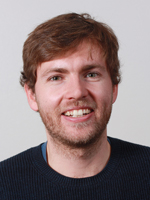Selected presentations
- 🆕Amaro, B., Prieur, N. C., Rubanenko, L., Lapôtre M. G. A. (2023): Rock abundance maps on the Moon from automated boulder measurements. American Geophysical Union Conference 2023.
- Prieur, N. C., Gonzalez, E., Amaro, B., L. Rubanenko, Z. Xiao, S. Werner, H. Kerner, Lapôtre M. G. A. (2023): Distribution of impact-generated boulders on planetary surfaces: Influence of target fracturation and lithology. The 54th Lunar and Planetary Science Conference (LPSC), Houston, USA. Abstract #2903.
- Prieur, N. C., Gonzalez, E., Amaro, B., L. Rubanenko, Z. Xiao, S. Werner, H. Kerner, M. G. A. Lapôtre (2022b): Deep Learning for Boulder Detection on Planetary Surfaces. American Geophysical Union Conference 2022. Abstract #P23A.
- Prieur, N.C., L. Rubanenko, Z. Xiao, H. Kerner, S.C. Werner and M.G.A. Lapôtre. (2022a): A large training dataset of boulder sizes and shapes as a first step towards the automated detection of rock fragments on planetary surfaces. The 53rd Lunar and Planetary Science Conference (LPSC), Houston, USA. Abstract #1835.
- Prieur, N. C., Werner, S. C. (2020): (Dis)similarities in the distributions of the shapes of large fresh impact craters on Mercury, Moon and Mars. What can we learn from them? Nordic Geological Winter Meeting, 8th-10th January 2020, Oslo, Norway.
- Bultel, B., Gilje, K., Karlsson, R., Krzesinska, A., Prieur, N. C., Rolf, T., Uppalapati, S. and Werner, S. C. (2019): The study of the crater formation process in situ and cratering chronology aspects. Cooperation between the European and Chinese Space Agency, 25th-26th July 2019, Zhuhai, China. Presenting author N. C. Prieur.
- Prieur, N. C., Werner, S. C. (2019): Constraining Impact Numerical Model Parameters with the Help of Fresh Simple Craters on the Moon. Lunar and Deep Space Exploration, 22th-24th July 2019, Zhuhai, China.
Awards & Fellowships
ATELIER-EO (2022–2025). co-PI of the first proposal in 2021. Automated machine learning framework tailored to Earth Observation. Innovasjonsprosjekt i næringslivet, funded by the Research Council of Norway in 2022 after minor revision. 6.9 MNOK awarded to Science & Technology Norway AS.
BOULDERING: Deep Learning for Boulder Detection on Planetary Surfaces. (2021–2024). PI. Marie Skłodowska-Curie Global Postdoctoral Fellowship. 284,345€.
A Deep Learning approach for boulder detection: The key to understand planetary surfaces evolution and their crater statistics-based ages (2021–2024). PI. MSCA-TOPP-UT, Norwegian Research Council. 400,000 NOK.
Cratering rates on Moon and Mars (2018–2020). co-PI of a two-year postdoctoral fellowship funded by ESA and Norwegian Research Council . Salary for two years.
IS-DAAD, Researcher exchange travel grant between Norway and Germany (2014–2017). ~50,000 NOK.
NOK = Norwegian Krone
Invited lectures
University of Santa Cruz (2022); Center for Earth Evolution and Dynamics (2021); Department of Geosciences, University of Oslo (2020). Natural Museum of History of Berlin (2019). Center for Earth Evolution and Dynamics (2018). Norwegian Water Energy and Resources Directorate (2012).
Outreach activities
During my PhD and postdocs at the University of Oslo and Stanford University, I spent about 1–2 weeks a year conducting outreach activities. Here is an example list of activities:
- Science fair of Oslo, Forskningstorget (two times).
- Live coverage of Insight’s landing at the “Astronomy on Tap” event (Oslo, Norway).
- Contributed to articles about my own research in online newspapers (see forskning.no and uniforum.uio.no)
- Collaborated with a Sandvika (Oslo, Norway) high school on planetary science-related projects.
- Participated as a mentor in the Sustainability Undergraduate Research in Geoscience and Engineering (SURGE) Program. More information can be found here.
